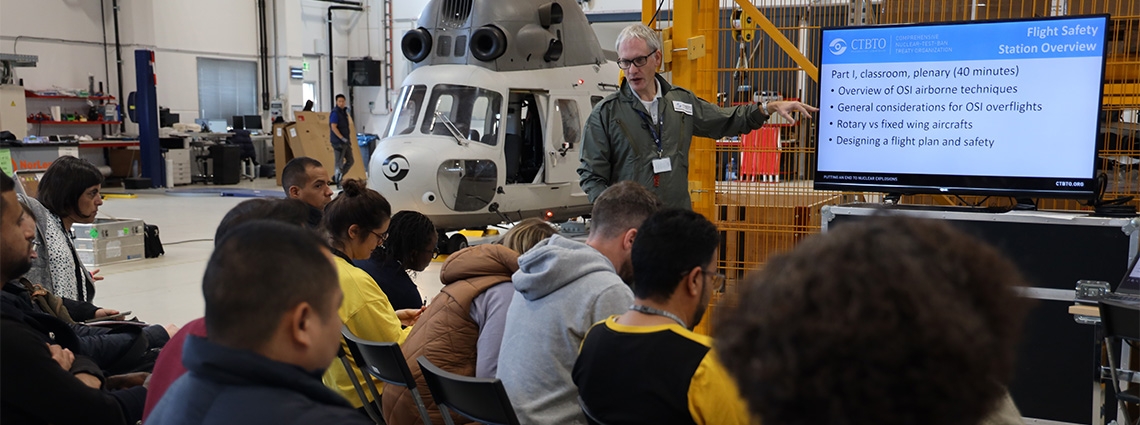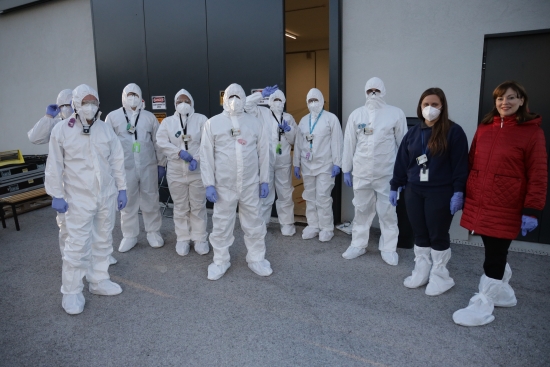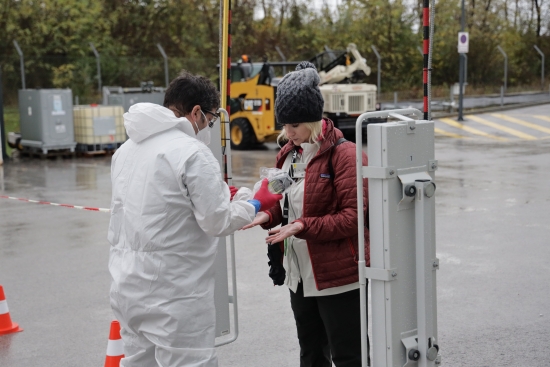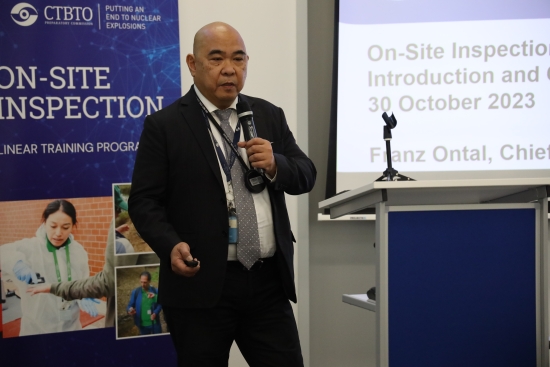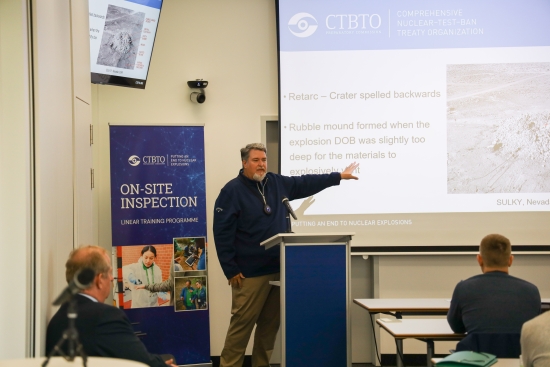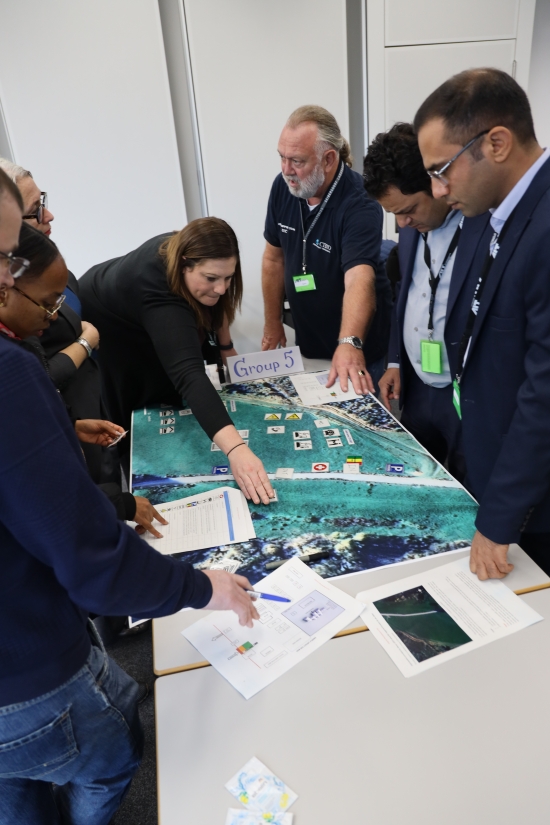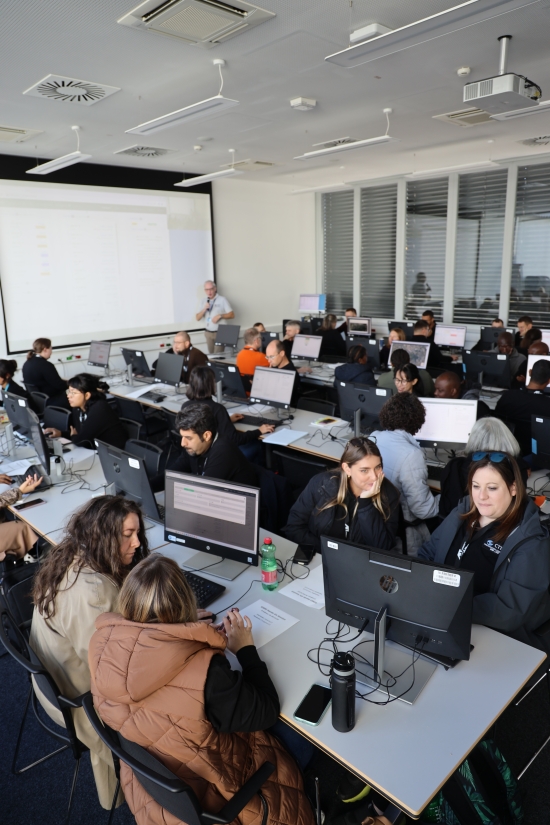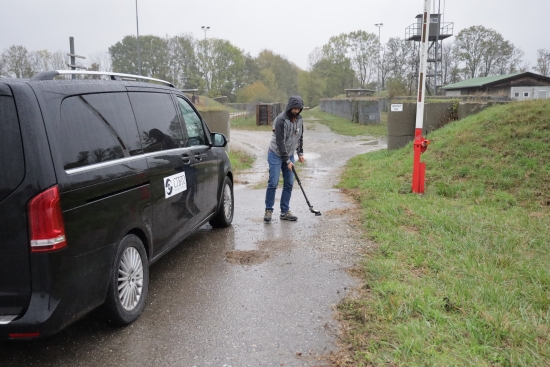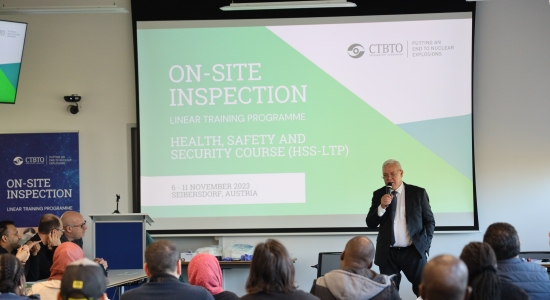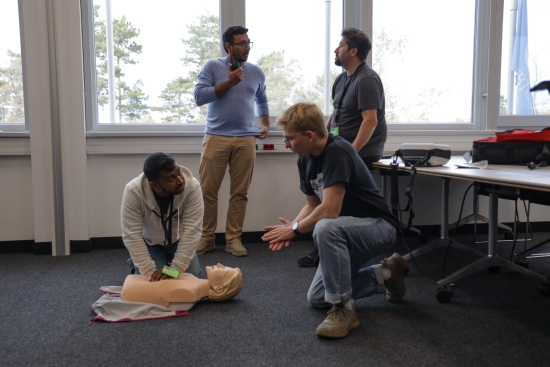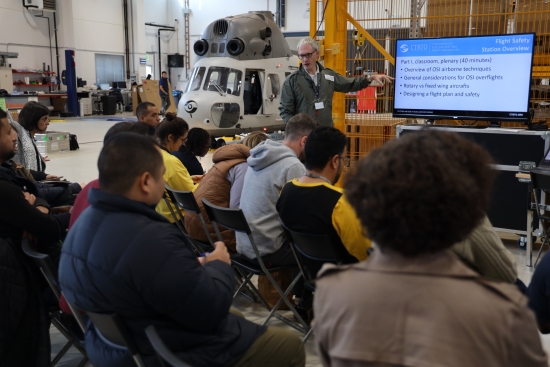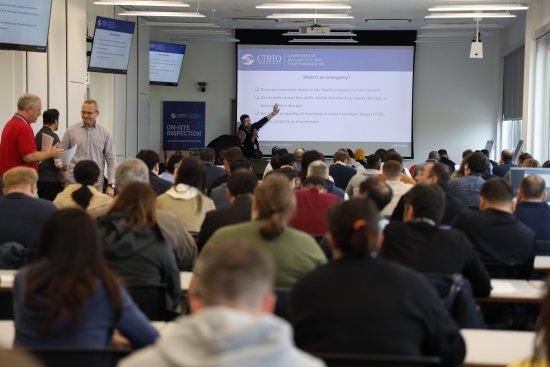Surrogate Inspector Trainees Gain Valuable Insights with new OSI Training Programme
The Comprehensive Nuclear-Test-Ban Treaty Organization (CTBTO) recently conducted two consecutive courses in the new On-Site Inspection (OSI) Linear Training Programme (LTP). The Introductory Course (IC-LTP) took place from 30 October to 4 November and the Health, Safety and Security Course (HSS-LTP) took place from 6 to 11 November. The objective was to provide an overview of on-site inspection methods as well as familiarise surrogate inspector trainees with the health and safety risks they could face in the field and how to mitigate them. Both courses were held at the CTBTO Technology Support and Training Centre (TeST Centre) in Seibersdorf, Austria and at the Austrian Armed Forces International Centre (AUTINT) in Götzendorf, Austria.
Introductory Course
The objective of the Introductory Course (IC-LTP) was to provide an initial instruction to new Linear Training Programme inductees on topics including Treaty provisions related to OSI, practical training on cross-cutting skills and inspection techniques, role play tabletop exercises, and a field training activity. Practical sessions included hands-on training on cross-cutting operational aspects of an OSI, such as communications, navigation, ground-based visual observation, environmental sampling, gamma radiation monitoring, and contamination control.
The tabletop exercises focused on negotiation role play scenarios on topics such as point of entry and exit (POE) procedures, managed access, and inspection team/inspected State Party (ISP) negotiations and designing a Base of Operations layout. Participants were also introduced to the Inspection Team Functionality framework to plan a field mission using a training version of the Geospatial Information Management for On-Site Inspection system (GIMO).
The final activity of IC-LTP was the field training exercise (FTX) which took place on Friday, 3 November. The FTX was designed as a validation activity in which participants were challenged to put into practice the skills they learned throughout the week. Participants were provided with an OSI scenario and were tasked with preparing their mission plans, OSI equipment, field team member task delegation, conducting the field mission, and reporting. The field teams deployed from the Base of Operations at the TeST Centre and navigated to the exercise waypoints at AUTINT in Götzendorf. There, participants used communications and field health and safety procedures. They also utilised position finding, visual observation, and environmental sampling and practiced negotiations with an inspected State Party representative who was played by a course facilitator.
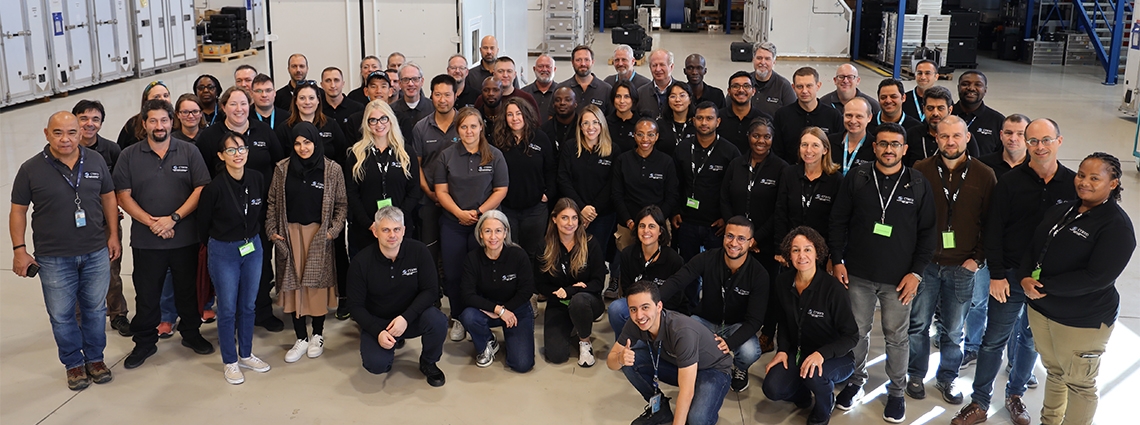
Participants at the Linear Training Programme
A total of 36 LTP trainees from 17 countries, 4 mentees from the CTBTO Mentoring Programme, 2 observers and 9 external facilitators and staff from the OSI division participated in the course. Notably, the gender breakdown of IC-LTP featured 39% female participants and 61% male participants.
Health, Safety and Security Course
The Health, Safety and Security course (HSS-LTP) is the second course in the OSI Linear Training Programme structure for surrogate inspector trainees. It was the first time that the entire cohort of new LTP trainees was invited to take part in a course together. The Director of the OSI Division, Oleg Rozhkov, delivered opening remarks to welcome the 77 LTP trainees from 37 States Signatories to the programme. Sixteen external facilitators also participated in the course.
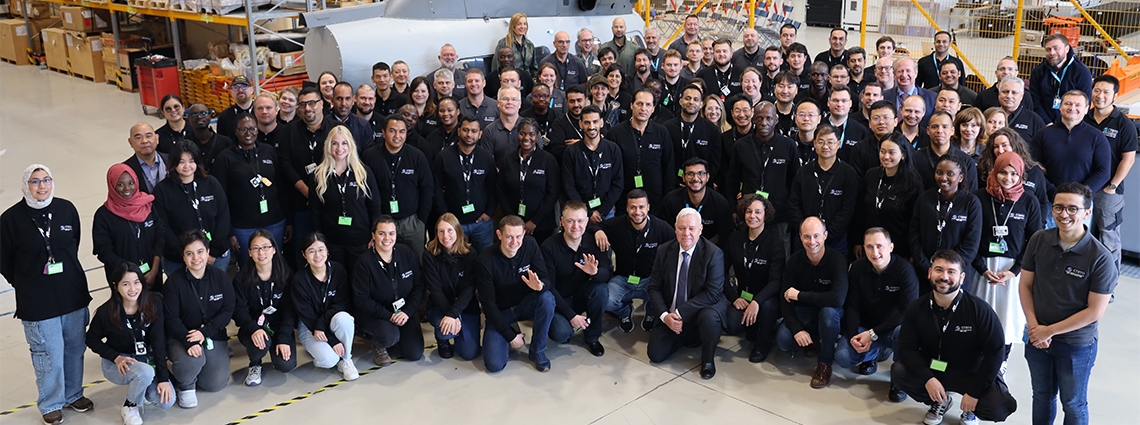
Participants at the Health, Safety and Security course
The objectives of HSS-LTP were to introduce trainees to the various risks inspectors may face during an on-site inspection and how to plan for and mitigate the risks using the OSI health and safety framework. Topics covered included an overview of the OSI health and safety policies and procedures, risk areas and risk management, industrial safety and radiological safety, hands-on training with radionuclide equipment for health and safety and decontamination procedures, basic first aid training, emergency communications, flight safety related to OSI overflights, convoy procedures and vehicle safety, and mine awareness training.
The training methodology included presentations, tabletop exercises, hands-on station rotation training, and a field training exercise. Highlights of the course included the use of the OSI airborne simulator for training on pre-flight and in-flight safety procedures on rotary wing aircraft as well as the radiation safety station rotation training where participants practiced donning personal protective equipment (PPE) and performed environmental sampling in a simulated radioactively contaminated area. Additional hands-on radiation detection training was provided by experts from Seibersdorf Laboratories using sealed sources in a supervised manner. Course participants were also hosted by AUTINT trainers who delivered lectures and practical training on checkpoints, convoy and vehicle accident response procedures, and mine awareness training.
The final activity of the course was the field training exercise (FTX) which took place on Friday, 10 November and served as a validation activity. The FTX activities included mission planning, equipment preparation, deployment from the base of operations, navigating to waypoints, communications within the field team and with the base of operations, engaging in field negotiations with a course facilitator acting as a representative of the Inspected State Party (ISP), conducting radiation monitoring for health and safety, field decontamination procedures, collecting environmental samples, ensuring chain of custody, and making visual observations and position finding.
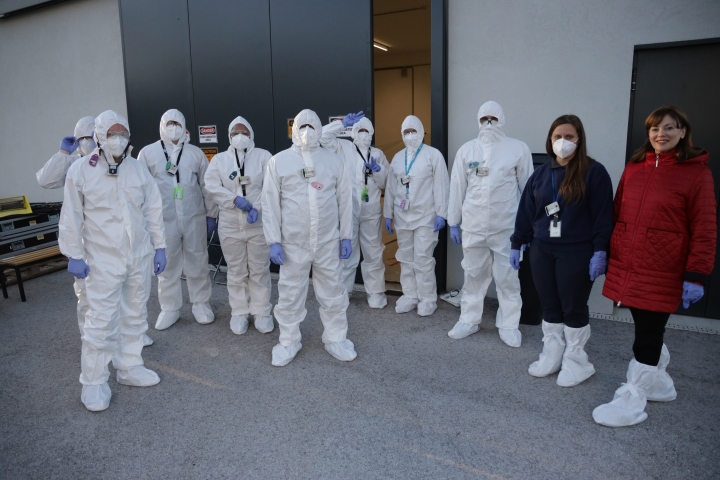
Team of participants at the OSI Health, Safety and Security Course
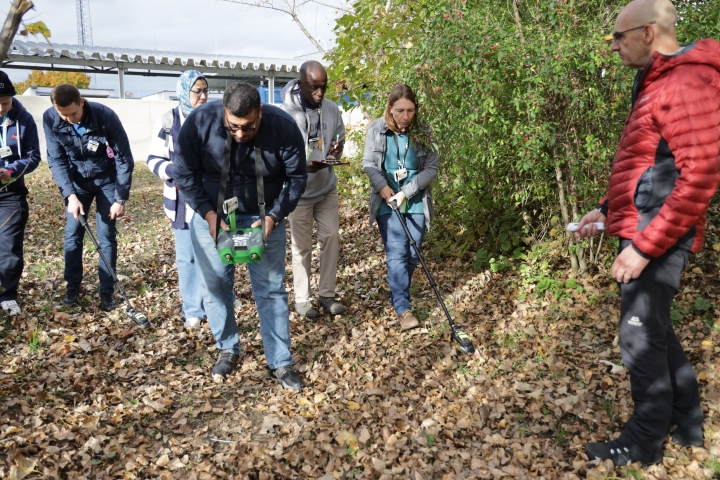
Linear Training Programme course participants in the field
After completing their field tasks, trainees returned to the base of operations where they underwent decontamination procedures and handed over field tablets and electronic media such as flash cards and memory sticks, as well as environmental samples. They then summarised their activities, observations, and findings in a field team report and provided a briefing to all trainees at the end of the exercise.
TeST Centre at full capacity
Due to the large number of participants and challenging programme design with parallel training activities and rotations taking place, the full capabilities of the TeST Centre were employed. This was also the first time it was possible to use all capabilities of the TeST Centre training rooms and infrastructure in a concurrent manner. The modular use of training rooms in plenary format, combined mode, and breakout mode provided flexible and rapidly re-configurable spaces for training. In addition, the audio-visual infrastructure enabled the course presentations to be live streamed and recorded as refresher training sessions for the roster of surrogate inspectors.
Next steps in the Linear Training Programme
The next course in the Linear Training Programme is the In-Field Operations Support course (IFOS-LTP) which is planned for April 2024 followed by the Visual Observation and Radionuclide Techniques course (VOBRN-LTP). This would mark the end of the introductory block of cross-training courses, at which point LTP trainees begin specialised training based on their expertise and assigned inspection team technical inspector role.
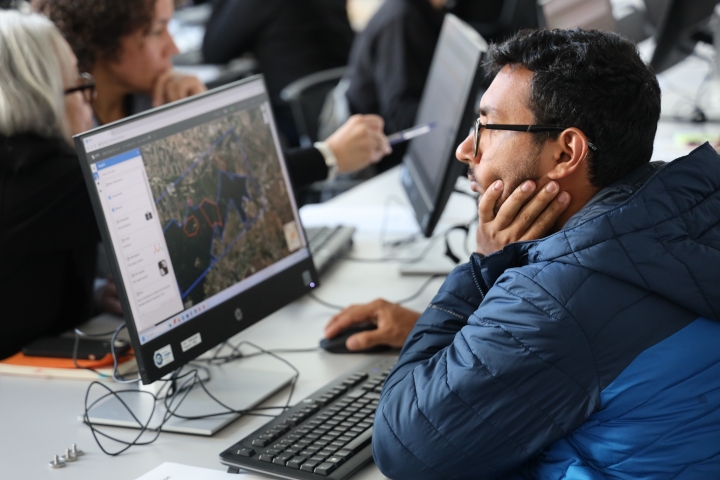
Participant at the training for Geospatial Information Management for On-Site Inspection system
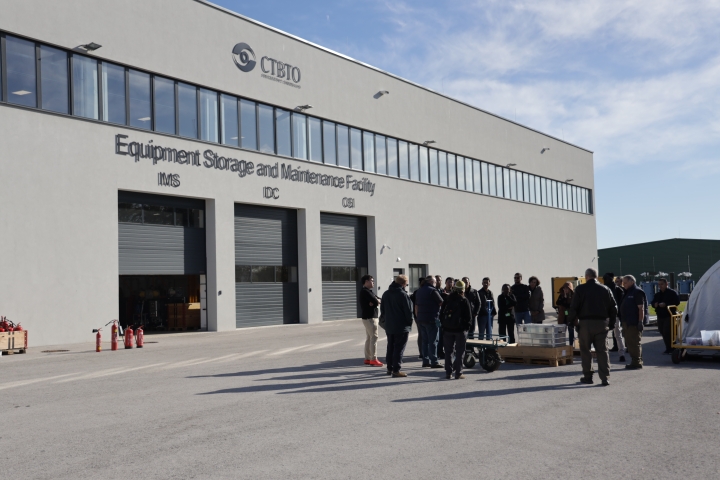
Base of Operations at the TeST Centre in Seibersdorf, Austria
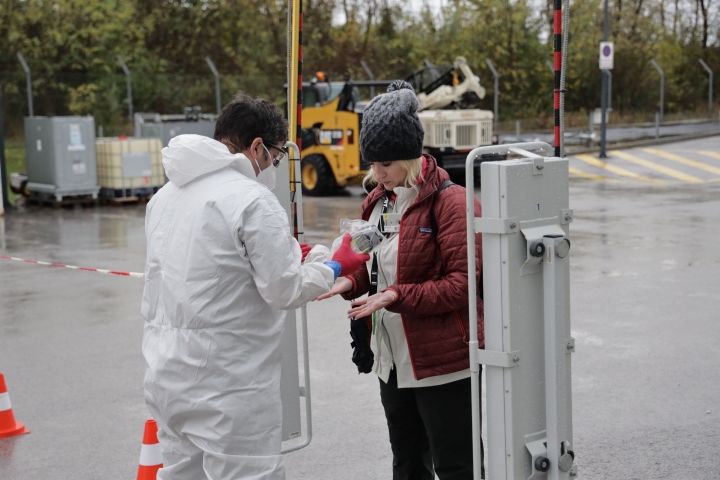
Field Training Exercise at Base of Operations
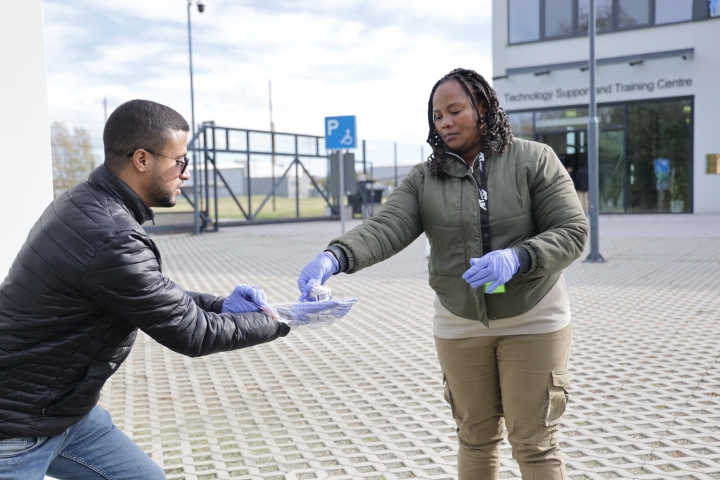
Station Rotation Training
8 Dec 2023
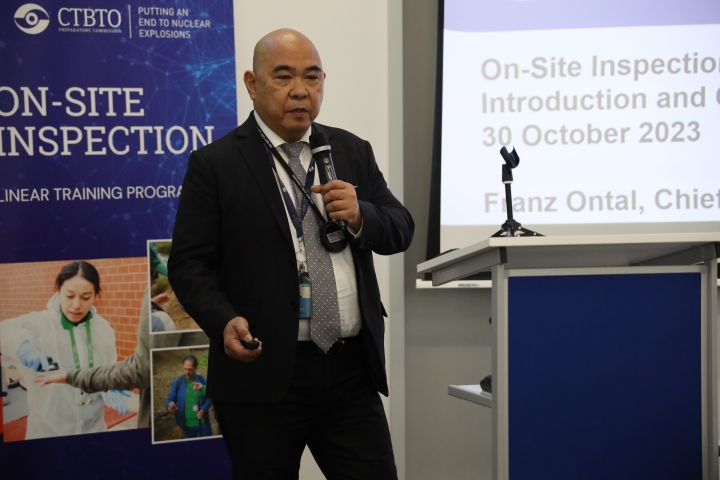
Franz Ontal, Chief of the OSI Training Section, addresses participants at the Introductory Course

Training on Visual Observation
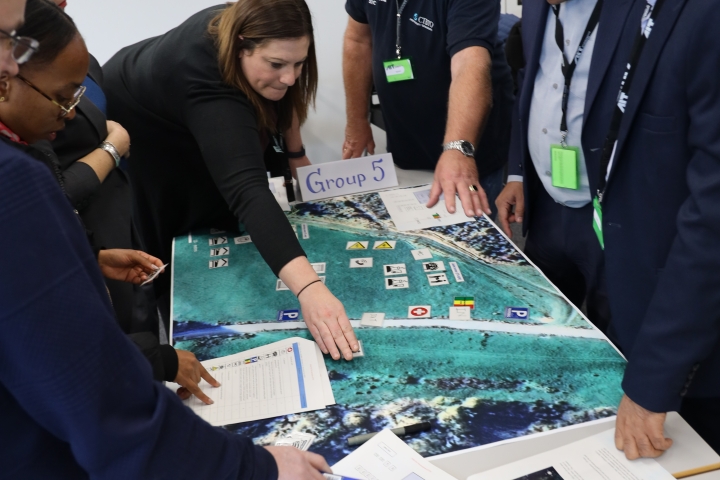
Linear Training Programme - Base of Operations exercise
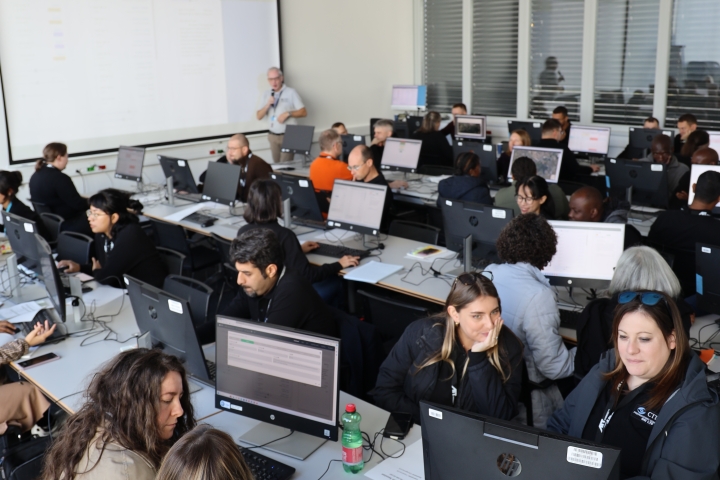
Geospatial Information Management for On-Site Inspection system (GIMO)

Station Rotation Training
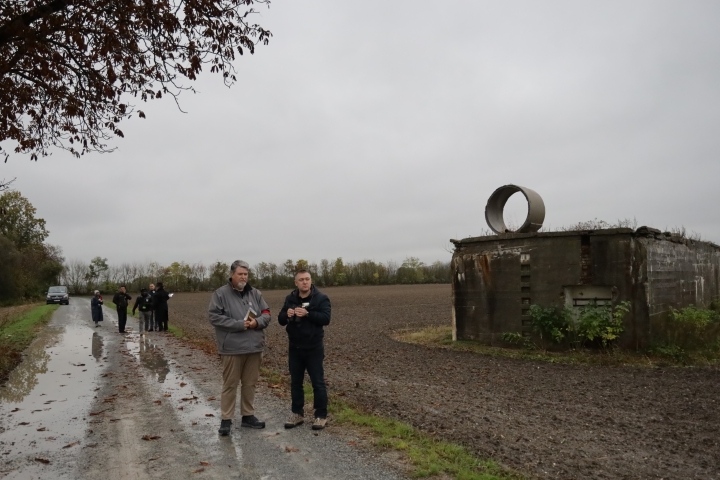
In Field Training Exercise, where participants were challenged to put into practice what they learned throughout the week
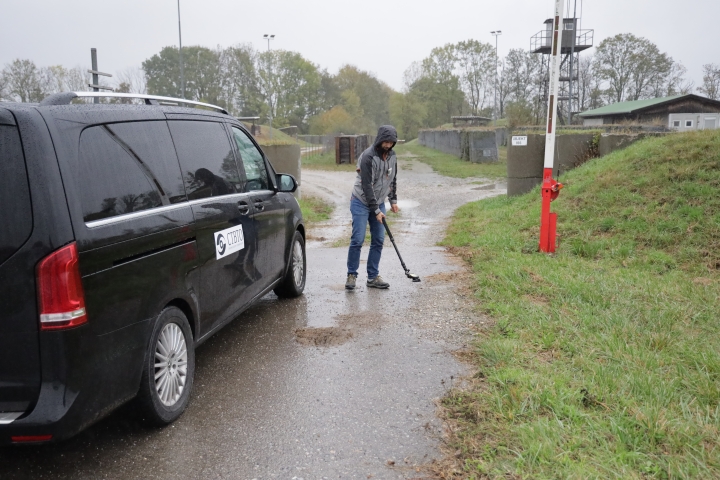
Linear Training Programme - Field Training
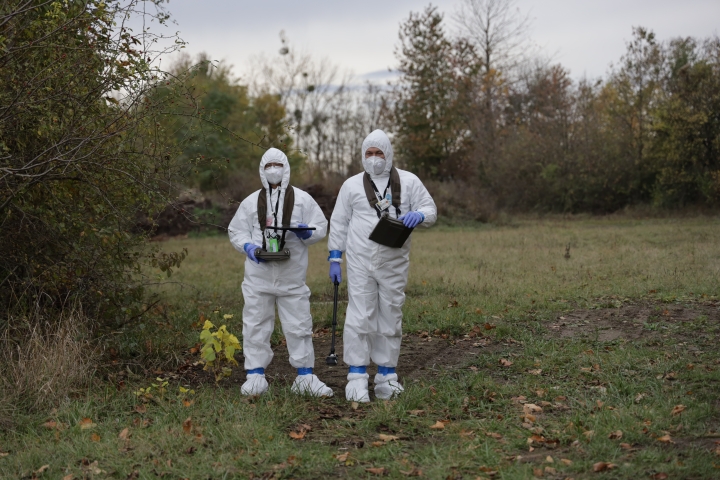
Participants at the Field Training Exercise

Oleg Rozhkov, Director of the OSI Division, addresses participants
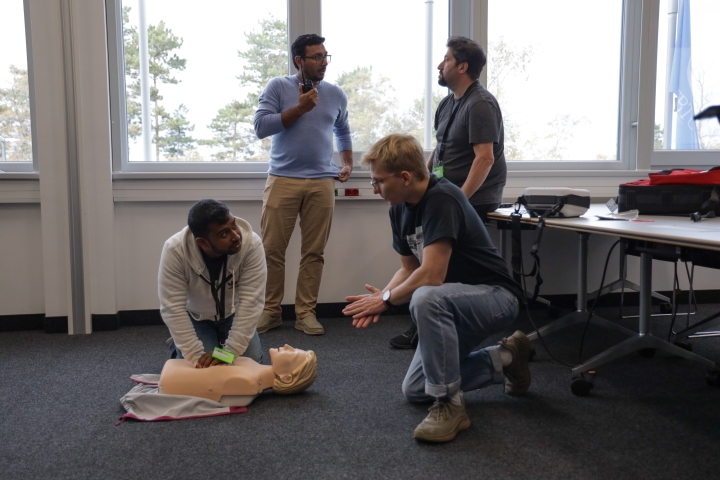
OSI Health, Safety and Security Course - Basic First Aid Training
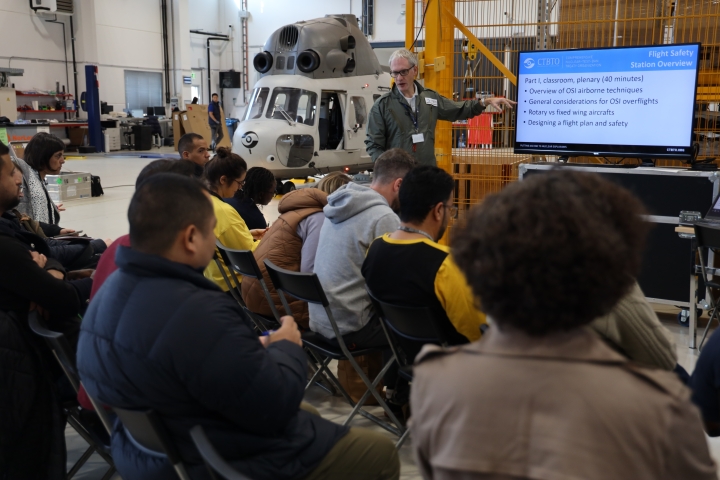
Training on the use of the OSI Airborne Simulator
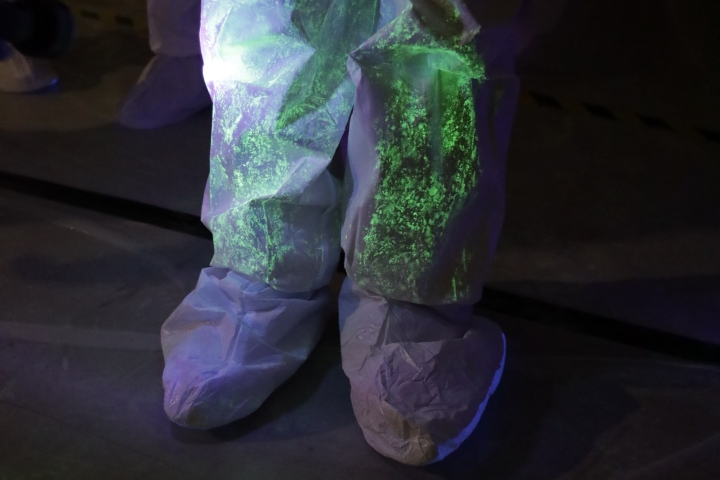
Glow in the dark powder under black lights to check for contamination after conducting environmental sampling in a simulated radioactively contaminated area
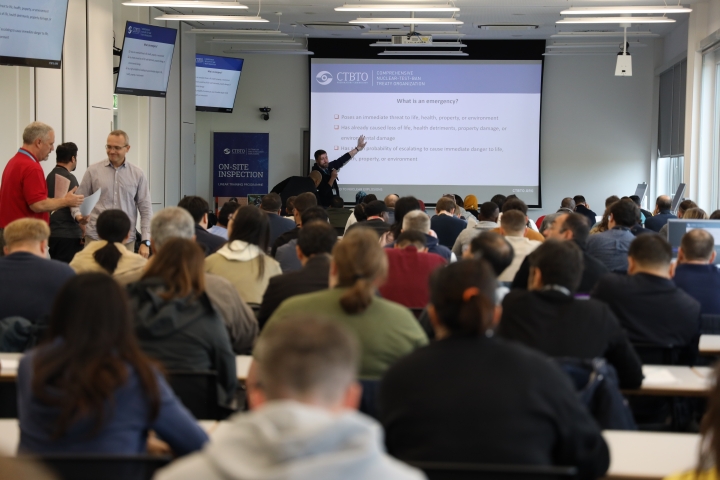
The full capabilities of the TeST Centre were employed, due to the large number of participants.
